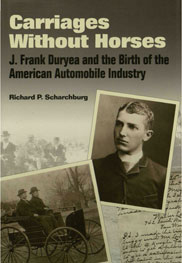Technical Paper
Autonomous Lane Change Control Using Proportional-Integral-Derivative Controller and Bicycle Model
2020-04-14
2020-01-0215
As advanced vehicle controls and autonomy become mainstream in the automotive industry, the need to employ traditional mathematical models and control strategies arises for the purpose of simulating autonomous vehicle handling maneuvers. This study focuses on lane change maneuvers for autonomous vehicles driving at low speeds. The lane change methodology uses PID (Proportional-Integral-Derivative) controller to command the steering wheel angle, based on the yaw motion and lateral displacement of the vehicle. The controller was developed and tested on a bicycle model of an electric vehicle (a Chevrolet Bolt 2017), with the implementation done in MATLAB/Simulink. This simple mathematical model was chosen in order to limit computational demands, while still being capable of simulating a smooth lane change maneuver under the direction of the car’s mission planning module at modest levels of lateral acceleration.

